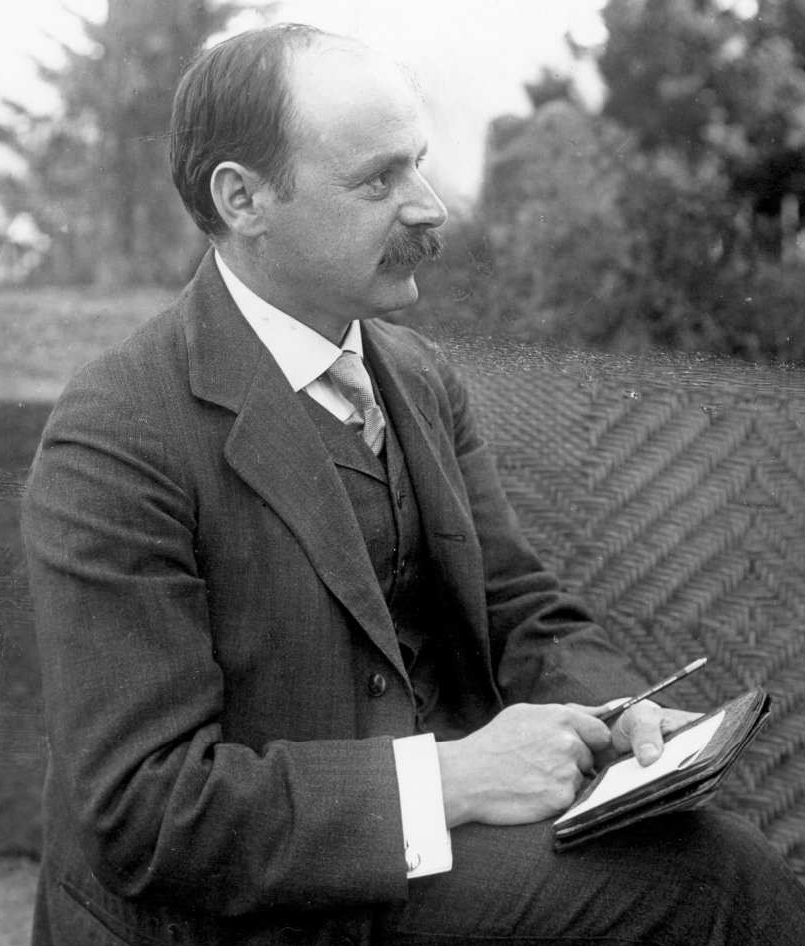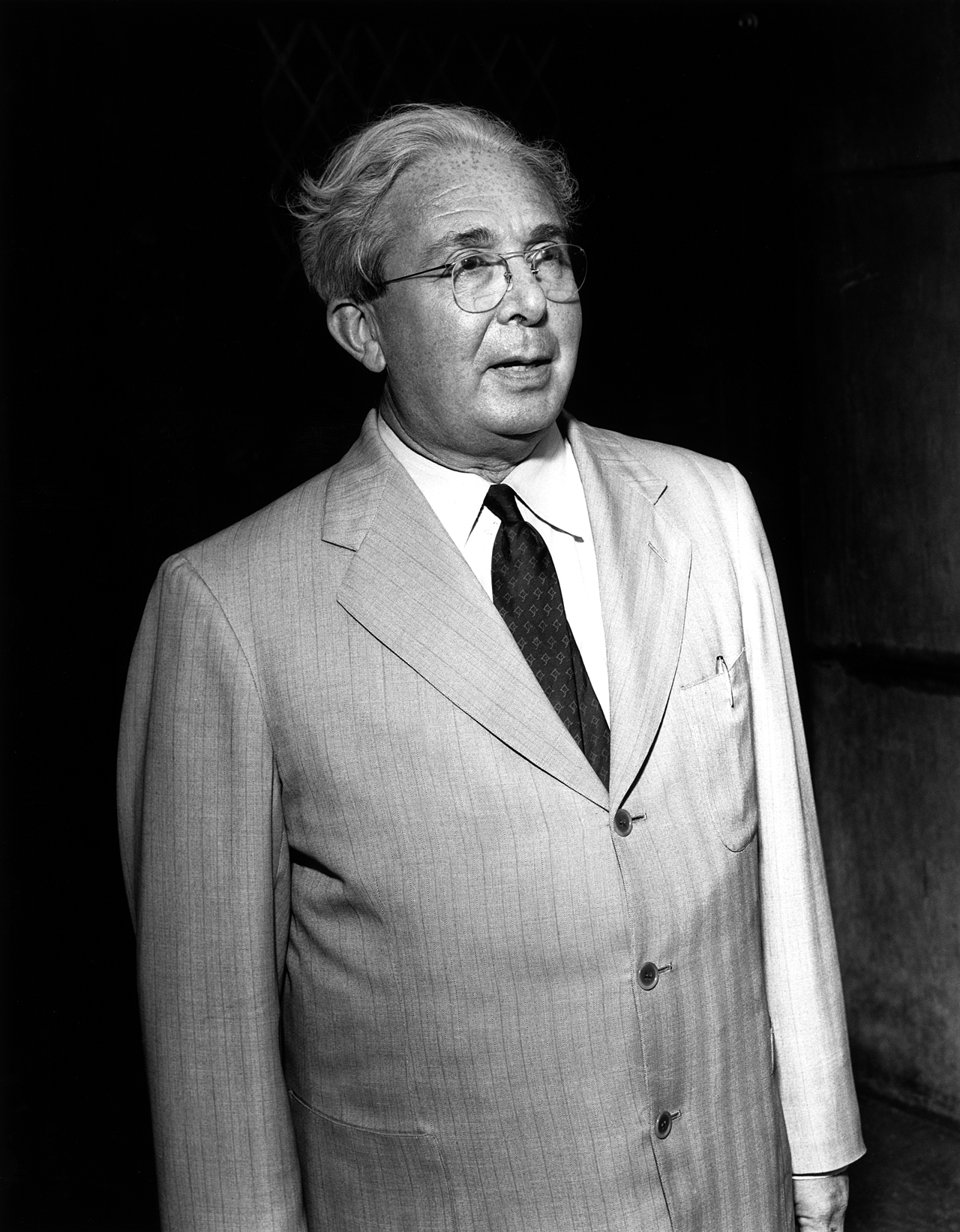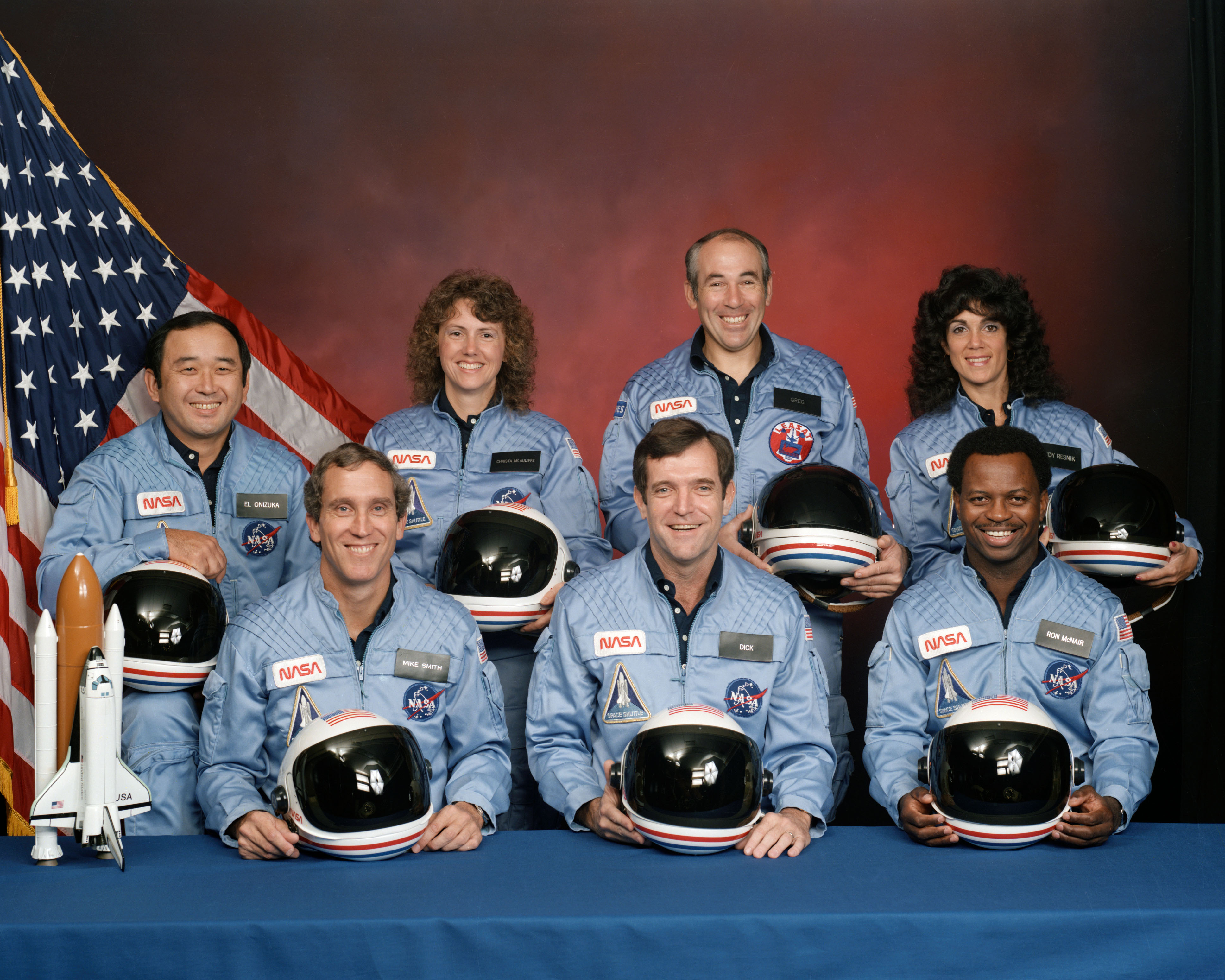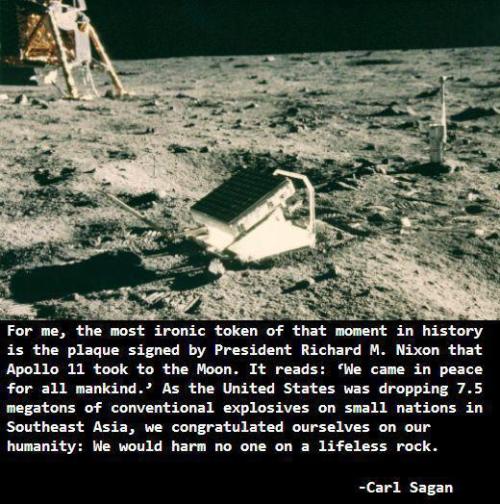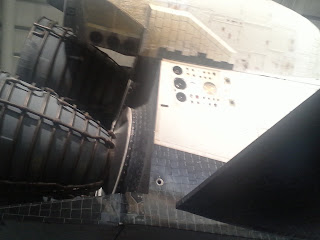Thanks to an excellent suggestion from my carpool driver (Emma, you know who are) I have come up with a better sponge activity and a way to display my EQ.
Originally, the class was going to be divided into physicist groups (i.e., the Planck group, the Einstein group, the Heisenberg group etc.) Now, I am planning on dividing them into particle groups. Now I can incorporate my other passion (knitting) into my presentation as well-on each desk will be a knitted plushie particle with a card that has it's name, spin, charge, and mass, as well as my essential question. For my sponge activity, I will have each group look up what their particle does and an interesting fact about it and then share out to the class.
So far, I'm planning on having seven groups (6 of 4 and 1 of 5) with the following particles:
Higgs Boson (important to my presentation that people understand how this one works)
Photon
W Boson (important for my third answer)
Z Boson (also important for my third answer)
Gluon
Top Quark (also important to my presentation for my second answer)
Muon (discovered by a cloud chamber, which is my activity)
I will post pictures as I knit these little fellows.
Why is finding supersymmetric particles an important task for physicists to undertake?
Tuesday, May 28, 2013
Monday, May 27, 2013
A Physics Memorial Day
In honor of Memorial Day, these are a few of the faces of physics and astronomy who died much too soon, sometimes in the prime of their careers. As Gandalf would say, "all we have to decide is what to do with the time that is given to us."
Marie Curie, November 7, 1867-July 4, 1934
One of the greatest physicists and chemists ever, Marie Curie was the first woman to win a Nobel Prize, one of only two individuals ever to win two Nobel Prizes in two different fields, and the only person ever to win them in two different scientific fields (physics and chemistry.) Curie is best known for her discovery of radioactivity, which has directly yielding life-saving advances in medicine and nearly all areas of science. Due to the years she spent exposed to high levels of radiation, Curie died of aplastic anemia at the age of 66.
Karl Schwarzschild, October 9, 1873-May 11, 1916
This German physicist was the first to provide an exact solution to Einstein's field equations for his theory of general relativity. He managed this incredible accomplishment while serving in the horrible conditions of the Eastern Front. A disease contracted due to these conditions led to his untimely death at age 42, very soon after he wrote his papers on relativity. Schwarzschild's work led to the acceptance of relativity and is responsible for much of our understanding of black holes and other cosmic phenomena.
Leo Szilard, February 11, 1898-May 30, 1964
A Hungarian-born Jew, Szilard fled the incoming Nazi regime and convinced President Roosevelt to begin developing an atomic weapon. Along with Enrico Fermi, Szilard helped invent the first nuclear reactor. However, he was not proud of this work and dedicated the rest of his life until his death at 66 to ensuring that science was used for peaceful purposes. Szilard is responsible for some of the radiation treatments used today in cancer patients.
Marie Curie, November 7, 1867-July 4, 1934
One of the greatest physicists and chemists ever, Marie Curie was the first woman to win a Nobel Prize, one of only two individuals ever to win two Nobel Prizes in two different fields, and the only person ever to win them in two different scientific fields (physics and chemistry.) Curie is best known for her discovery of radioactivity, which has directly yielding life-saving advances in medicine and nearly all areas of science. Due to the years she spent exposed to high levels of radiation, Curie died of aplastic anemia at the age of 66.
Karl Schwarzschild, October 9, 1873-May 11, 1916
This German physicist was the first to provide an exact solution to Einstein's field equations for his theory of general relativity. He managed this incredible accomplishment while serving in the horrible conditions of the Eastern Front. A disease contracted due to these conditions led to his untimely death at age 42, very soon after he wrote his papers on relativity. Schwarzschild's work led to the acceptance of relativity and is responsible for much of our understanding of black holes and other cosmic phenomena.
Leo Szilard, February 11, 1898-May 30, 1964
A Hungarian-born Jew, Szilard fled the incoming Nazi regime and convinced President Roosevelt to begin developing an atomic weapon. Along with Enrico Fermi, Szilard helped invent the first nuclear reactor. However, he was not proud of this work and dedicated the rest of his life until his death at 66 to ensuring that science was used for peaceful purposes. Szilard is responsible for some of the radiation treatments used today in cancer patients.
Enrico Fermi, September 29, 1901-November 28, 1954
Italian-American physicist Enrico Fermi built the first nuclear reactor with his colleague, Leo Szilard, and was one of the first to work on particle theory. Fermi refused to cooperate with the fascist regime during the war, and later advocated for the responsible use of nuclear technology, and it is because of his work that we are able to harness nuclear power today. Likely due to his work with unsafe nuclear technology, Fermi died of stomach cancer at just 53 years old.
Erwin Planck, March 12, 1893-January 23, 1945
The fourth child of great physicist Max Planck and his first wife, Erwin Planck shared his father's love for their homeland. Planck hated seeing Germany fall under Nazi power, and became involved in the July 20 plot to assassinate Hitler. He was caught and later executed.
The crew of the Challenger, January 28, 1986
Francis Scobee, Michael Smith, Ronald McNair, Ellison Onizuka, Judith Resnik, Greg Jarvis, and Christa McAuliffe were reminders of the courage it takes for space travel and scientific discovery and the price that is sometimes paid.
Carl Sagan, November 9, 1934-December 20, 1996
An American astronomer and astrophysicist, Carl Sagan made it his life's work to bring people together through science. Sagan was an advocate for space travel and for the search for extraterrestrial life. He was the first to posit that Jupiter's moon Europa might be habitable. It was later discovered that Europa does indeed have water on its surface. Unfortunately, Sagan was never able to witness the 21st century advancements in space exploration, dying from complications of myelodysplastic syndrome at the age of 62.
Saturday, May 25, 2013
Visit to the Space Shuttle Endeavor
Pictures from my visit to the California Science Center to see the space shuttle Endeavor. If you haven't been, you need to go. No picture I could take does it justice-it is truly awe-inspiring, even for someone as cynical and jaded as me (haha.)
Please tell your Congressional representatives that NASA deserves to be funded. Manned/unmanned spaceflights yield discoveries that benefit all of humanity.
Chandra X-ray telescope to survey X-ray emissions from supernovae and other cosmic phenomena.
Spitzer Space Telescope-infrared telescope that takes some stunning pictures of nebulae and early galaxies.
Not going to lie, I teared up when I saw this. Amazing.
AMERICA! To bad NASA no longer gets funded...
Panorama shot I took-sorry for the strange bulge.
Bottom of the shuttle-all of these tiles are individually labeled, cut, and placed.
Spacehab module for cargo storage
Gigantic "wing"
America at her absolute best.
.
Sunday, May 19, 2013
Blog 25: Mentorship
Professor Mark B. Wise
wise@theory.caltech.edu
The most important skill I gained from my mentorship experience was confidence in my abilities. I have always felt overlooked when it comes to science and math, and I think that is partially a function of being a girl. Going into this project, I had no confidence in myself and assumed that everyone I talked to would think I was stupid or a waste of their time. I have had completely the opposite experience. Everyone I have met (particularly Professor Wise and Professor Polchinski) has been incredibly supportive, informative, and helpful. Without the encouragement I received from Professor Cheung and his postdoc, for instance, I highly doubt I would have felt confident enough to take my science project to the science fair or to present my findings to so many professionals. Without the experience I gained, I would never have found the guts to apply at the Griffith Observatory. I now feel much more comfortable taking risks in my thinking and pursuing and presenting new ideas. I know I have ideas that are worth listening to. If we want more women in science, I think girls need the encouragement I received to take risks and be confident in what they have to say. I know at I am good at physics, but I think I needed this experience to show me that I can step out of my comfort zone or think out of the box and come up with completely new ideas.
I met all of the people who have helped me answer my essential question through my mentor, Professor Wise. For example, he introduced me to Professor Sean Carroll who taught me about cloud chambers. This got me interested in methods of particle detection other than colliders and helped lead me to my third answer about dark matter. I could have found the answers to my essential question purely through research, but I would not have gotten the in-depth understanding of and perspective on the most pressing issues of physics that I received from Sean Carroll, Joe Polchinski, Clifford Cheung, and all of the others. By getting this, I was able to differentiate my answers and choose a best answer.
I plan on doing some more mentorship until the year is out.
Much thanks to Professor Wise for taking on a lowly high school student like myself.
wise@theory.caltech.edu
The most important skill I gained from my mentorship experience was confidence in my abilities. I have always felt overlooked when it comes to science and math, and I think that is partially a function of being a girl. Going into this project, I had no confidence in myself and assumed that everyone I talked to would think I was stupid or a waste of their time. I have had completely the opposite experience. Everyone I have met (particularly Professor Wise and Professor Polchinski) has been incredibly supportive, informative, and helpful. Without the encouragement I received from Professor Cheung and his postdoc, for instance, I highly doubt I would have felt confident enough to take my science project to the science fair or to present my findings to so many professionals. Without the experience I gained, I would never have found the guts to apply at the Griffith Observatory. I now feel much more comfortable taking risks in my thinking and pursuing and presenting new ideas. I know I have ideas that are worth listening to. If we want more women in science, I think girls need the encouragement I received to take risks and be confident in what they have to say. I know at I am good at physics, but I think I needed this experience to show me that I can step out of my comfort zone or think out of the box and come up with completely new ideas.
I met all of the people who have helped me answer my essential question through my mentor, Professor Wise. For example, he introduced me to Professor Sean Carroll who taught me about cloud chambers. This got me interested in methods of particle detection other than colliders and helped lead me to my third answer about dark matter. I could have found the answers to my essential question purely through research, but I would not have gotten the in-depth understanding of and perspective on the most pressing issues of physics that I received from Sean Carroll, Joe Polchinski, Clifford Cheung, and all of the others. By getting this, I was able to differentiate my answers and choose a best answer.
I plan on doing some more mentorship until the year is out.
Much thanks to Professor Wise for taking on a lowly high school student like myself.
Friday, May 10, 2013
Blog 24: Exit Interview Questions
(1) What is your essential question? What is the best answer to your question and why?
My essential question is "Why is finding supersymmetric particles an important task for physicists to undertake?" My best answer to this question is, "Supersymmetry provides the most complete solution to the problem of the vacuum energy." I chose this as my best answer over all the others because the problem of the vacuum energy (also known as the quantum vacuum or the cosmological constant) is one of the oldest and most confounding unsolved problems in cosmology, and it is one that directly affects the longevity of the universe we live in. According to MIT physicist Max Tegmark in Through the Wormhole with Morgan Freeman, an unstable vacuum means the universe has a much better chance of decaying into a lower energy state (as it did during the Big Bang.) If supersymmetry exists and we understand the method of supersymmetry breaking, this problem will be solved.
(2) What process did you take to arrive at this answer?
Originally, I had wanted to focus on gravity in quantum mechanics and the unification of general relativity with quantum mechanics. However, after I read Leonard Susskind's The Cosmic Landscape and Lisa Randall's Warped Passages, I discovered that string theory cannot include gravity without the existence of supersymmetry. I decided that it was quite possible supersymmetry would provide solutions to other problems in physics and cosmology, so I decided to focus my senior project on it. I discovered that not only does supersymmetry complete string theory, it also resolves the Hierarchy Problem of the Standard Model, the problem of the vacuum energy, and it provides multiple candidates for dark matter that fit well with observations, as I discovered in the numerous papers I read for my science project. When I considered these problems and looked at the enormous cost of experiments dedicated to finding physics beyond the Standard Model, I decided the most important one was the problem of the vacuum energy. As of yet, it cannot be resolved without the existence of supersymmetry, and an unstable vacuum means our universe is due for another Big Bang-esque decay. If physicists do not find supersymmetric particles, they will have to dedicated their time to conceiving other theories to resolve this problem.
(3) What problems did you face? How did you resolve them?
There are almost no women in physics, so whenever I go to functions with my mentor at Caltech or when I hang out with physicists my own age, I feel sort of awkward. I wanted to find a female mentor, since I believe girls need positive female role models to encourage them to go into science and math, but that was nearly impossible. This isn't really a problem I can solve, for I am but a lowly high school student. In the future, I hope to be part of the solution and be a role model for young girls like myself. Also, I was in no way equipped to do the math, so I buckled down and taught myself calculus online and from a book, with help from the grad students at my mentorship.
(4) What are the two most significant sources you used to answer your essential question and why?
The two most important sources I used were my fourth interview with Joe Polchinski of the Institute for Theoretical Physics at UC Santa Barbara. He gave me the most in-depth analysis of superstring theory, supersymmetry and quantum gravity I had gotten. Before this interview I had ignored the problem of understanding supersymmetry breaking, but his explanation made me understand its significance. My second most important source was a paper called Implications of a 125 GeV Higgs for Neutralino Dark Matter in the MSSM by Howard Baer, Vernon Barger and Azer Mustafayev. Apart from being the first real technical paper I learned to decipher, this was the most current analysis of supersymmetric parameter space and its implications with the most accurate measurement of the Higgs mass.
(5) What is your product and why?
I used to not understand why people dedicate their whole lives to studying the universe, which appeared to me as a cold, hostile, lifeless place. Why did no one care about our little swatch of the universe, where more and more terrible things seemed to be happening everyday? Now that I've done my science project and done all of this research, I understand what drives people to spend their whole lives in pursuit of discovery. I have greatly increased my own curiosity about the universe and, in doing so, broadened my view of life on Earth. I realize we are all pretty much the same-just recycled atoms from old stars that have grown sentient. I was afraid studying physics would turn me into Edward Teller or Werner Heisenberg, but instead I feel more like Erwin Schrodinger, who never let the turmoil of the 20th century interfere with his quest for discovery, or allowed his scientific ambitions to turn him away from the people in this world. I think if more people understood where we came from, the world would be a much more harmonious place.
Enjoy this picture of the Cosmic Microwave Background Radiation courtesy of the Planck Satellite. This is the universe at the youngest we can see it. If you turn your radio to white noise, you can hear this buzzing about. The universe is talking to you!
Wednesday, May 8, 2013
Blog 23: 2014 Interview
1. Who did you interview and what house are they in?
Jeremy Etheridge-I honestly have no idea what house he is in.
2. What ideas do you have for your senior project and why?
J: EMT or something having to do with first aid, because that's what my dad does and I've always liked helping people.
3. What do you plan to do for your summer 10 hour mentorship experience?
J: I plan on working with my dad.
4. What do you hope to see or expect to see in watching the 2013 2-hour presentations?
J: I'm expecting to understand more about how exactly we are supposed to present it, because right now I really have no idea. I know we are supposed to be teaching a class, but I am hoping to see more of the specifics about what exactly will we be presenting on.
5. What questions do you have that I can answer about senior year or senior project (or what additional information did you tell them about senior year or senior project)?
J: I've heard it's a lot of work.
H: It is, but as long as you manage your time well, you'll be fine. Like, they'll give a two-month deadline. You'll think that's a long time, but all of a sudden you'll figure out you have a week left to go and you will have done nothing. As long as you do a little bit everyday, maybe 10 minutes or so, it won't seem like that much work.
J: How do the house competitions work?
H: Well, Mr. Purther sets those up. Sometimes it's capture the flag or kickball. Lately we've been playing word games and chess. Usually they happen on Friday, since we always seem to have a big chunk of downtime for some reason. Anyway, the house that wins gets one point and the winning house gets to go to grad night for free. Oh, and charity stuff is a house competition. For instance the house that donates the most cans gets a house point.
Thank you Jeremy! Good luck in ASB next year!
Jeremy Etheridge-I honestly have no idea what house he is in.
2. What ideas do you have for your senior project and why?
J: EMT or something having to do with first aid, because that's what my dad does and I've always liked helping people.
3. What do you plan to do for your summer 10 hour mentorship experience?
J: I plan on working with my dad.
4. What do you hope to see or expect to see in watching the 2013 2-hour presentations?
J: I'm expecting to understand more about how exactly we are supposed to present it, because right now I really have no idea. I know we are supposed to be teaching a class, but I am hoping to see more of the specifics about what exactly will we be presenting on.
5. What questions do you have that I can answer about senior year or senior project (or what additional information did you tell them about senior year or senior project)?
J: I've heard it's a lot of work.
H: It is, but as long as you manage your time well, you'll be fine. Like, they'll give a two-month deadline. You'll think that's a long time, but all of a sudden you'll figure out you have a week left to go and you will have done nothing. As long as you do a little bit everyday, maybe 10 minutes or so, it won't seem like that much work.
J: How do the house competitions work?
H: Well, Mr. Purther sets those up. Sometimes it's capture the flag or kickball. Lately we've been playing word games and chess. Usually they happen on Friday, since we always seem to have a big chunk of downtime for some reason. Anyway, the house that wins gets one point and the winning house gets to go to grad night for free. Oh, and charity stuff is a house competition. For instance the house that donates the most cans gets a house point.
Thank you Jeremy! Good luck in ASB next year!
Friday, May 3, 2013
Blog 22: Final 3-Column Chart
https://docs.google.com/spreadsheet/ccc?key=0AlCsYHBSZf56dHVlM0ZyNFVpeU1QTzBpbU5SZ3dCSmc#gid=0
Subscribe to:
Posts (Atom)

